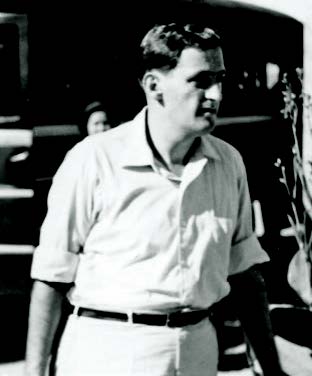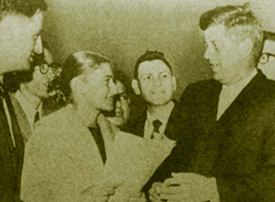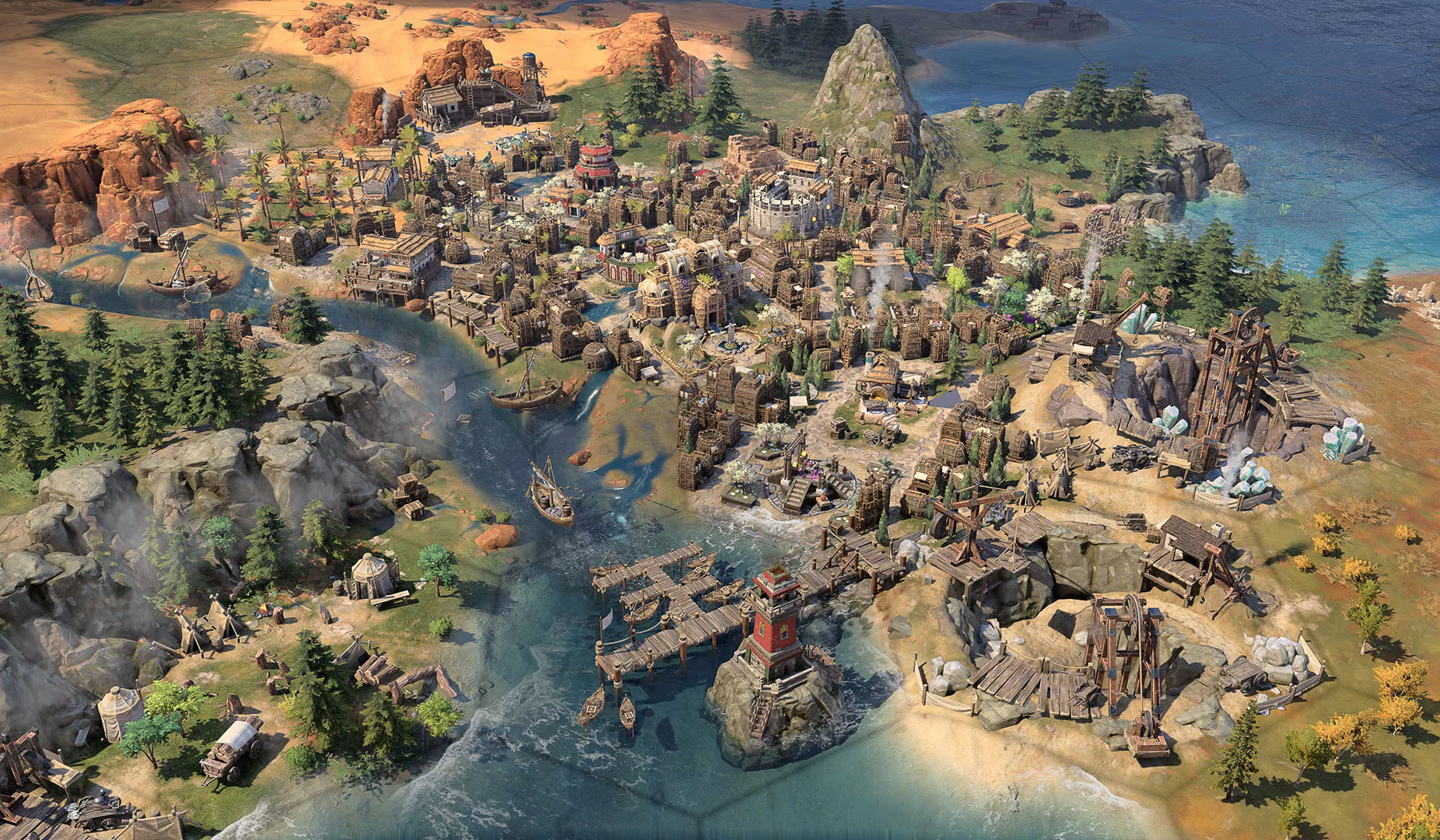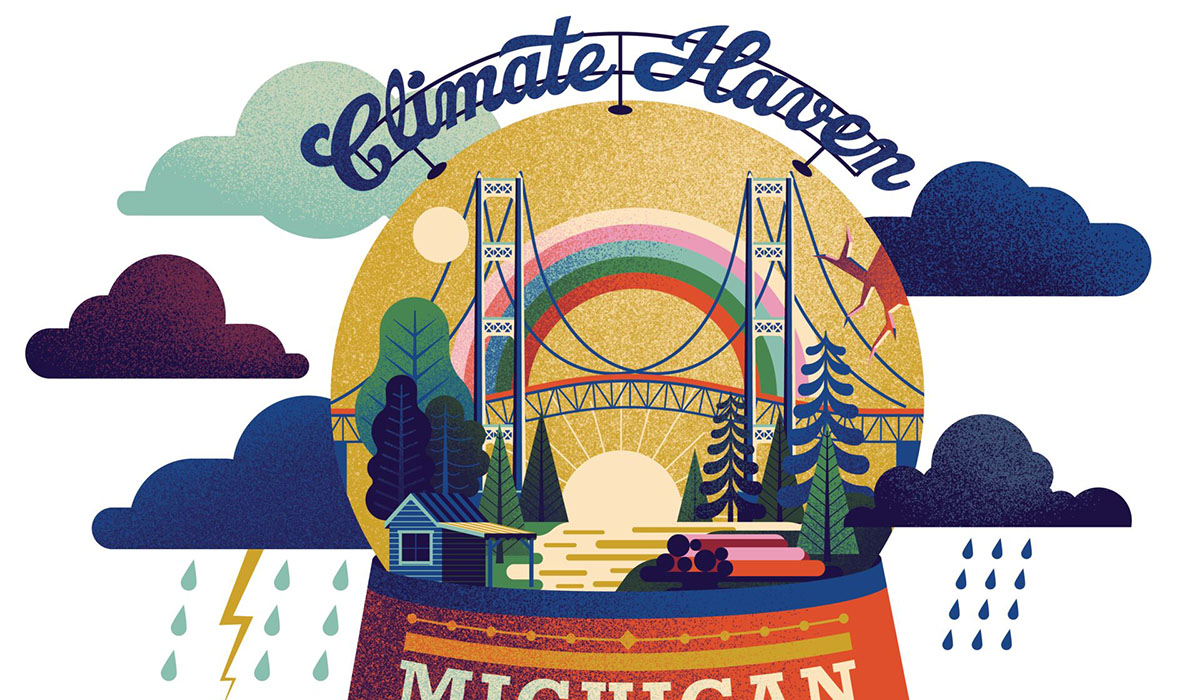The iconic story of Sen. John F. Kennedy announcing his vision of a volunteer youth corps is familiar to anyone who has ever toured the University campus and stopped at the entrance to the Michigan Union, where a plaque commemorates the event. But the details of the U-M students and faculty who took action in the succeeding weeks and months toward the establishment of the Peace Corps are less well known.
“Sargent Shriver said if the students and faculty at the University of Michigan didn’t respond when they did, there wouldn’t have been a Peace Corps,” says Alan Guskin, PhD’68, paraphrasing the first director of the Peace Corps and JFK’s brother-in-law. Guskin, his then-wife Judy, MA’61, PhD’70, and several other students formed a group with the idealistic name Americans Committed to World Responsibility and organized to respond to Kennedy’s challenge and to urge him to follow through once elected. But their work would not have started without that speech on the steps of the Michigan Union.
“There was no plan that he would speak when he came here,” says John E. Greisberger, director of U-M’s International Center. But when Kennedy and his entourage arrived at the Union, he adds, “there was a mob of thousands of students, which really surprised them. Basically, his advisers said, ‘You’ve got to say something.’”
Within one year, the University of Michigan played a vital role in the development and implementation of the new government program.
Rather than deliver a canned campaign speech, JFK challenged his audience with the question “How many of you who are going to be doctors are willing to spend your days in Ghana? Technicians or engineers, how many of you are willing to work in the Foreign Service and spend your lives traveling around the world?”
The reason he chose to deliver those particular remarks at that particular time isn’t clear, says Judy Guskin. U-M economics Professor Samuel Hayes was writing a position paper for JFK at the time about a volunteer corps, which was also the subject of two bills that had been recently introduced in the U.S. Congress by Sen. Hubert Humphrey and Rep. Henry Reuss. So the subject might have been on Kennedy’s mind. Or the reason might have been more simple. “We were students; there were a lot of us; this was a major university,” says Judy Guskin. “Since it was near the very end of the campaign, a response might trigger something further on this idea before the end of the election, which was coming up. This was the ideal place to do it — an excited group of students.”
What is known for sure is that JFK arrived in Ann Arbor from New York after the third of his four debates against Richard Nixon. After many ground delays due to bad weather on the East Coast, the candidate’s airplane landed at Willow Run Airport in neighboring Ypsilanti, Michigan, where he delivered a campaign speech. He stopped at Eastern Michigan University to deliver another campaign speech before heading to Ann Arbor. The campaign intended for JFK to get a few hours of sleep at the Michigan Union before starting a whistle-stop tour of the state the next day.
Watching the debate that night were the Guskins, who spontaneously decided to walk to the Union and see Kennedy. “We just decided, why not?” says Al Guskin. “In fact, one of our friends was trying to discourage us, saying ‘Ah, he’s just another politician.’ We decided to do it anyway. I don’t think we expected it to be 2 a.m. when he got there.” It was so late that Dean of Women Deborah Bacon periodically extended the curfew to allow the women students to attend.
Less than a week after the speech, U.S, Rep. Chester Bowles, a JFK foreign policy adviser, spoke at the Michigan Union Ballroom before an audience that included the Guskins. “He didn’t know anything about Kennedy’s talk, but someone asked him a question about what Kennedy had said. And he talked about his son and daughter-in-law, who were in Nigeria at the time doing a Peace Corps-like assignment.” Again inspired, Al and Judy Guskin drafted a letter on a restaurant napkin supporting the idea of the Peace Corps. They personally delivered the letter to Tom Hayden, ’61, then-editor of The Michigan Daily, urging its publication.
Once the letter was published on Oct. 21, the couple’s phone rang off the hook with calls from numerous students excited about the concept of the Peace Corps and wanting to participate. As the student group Americans Committed to World Responsibility, they organized a petition drive and gathered several hundred signatures within a few days. “The petition basically said we love this idea, we want to get in back of this idea of Kennedy’s, and we are willing to serve,” says Judy Guskin. “And the petition went all over campus. In classrooms, faculty allowed it to be circulated.”
One student, Sharon Jeffrey, told her mother about the movement. Mildred Jeffrey, who was the Democratic National committeewoman for the state of Michigan, immediately contacted the Kennedy campaign, eventually speaking with speechwriter Ted Sorenson.
“That’s when Kennedy’s aide and speechwriter decided that there needed to be a major speech about this,” says Greisberger. “And at the Cow Palace in San Francisco only six days before the election, JFK gave that major speech where he shared his vision for world peace and actually proposed the Peace Corps.”

Service in Thailand
Following the Nov. 2 Cow Palace speech, Kennedy traveled to Toledo, Ohio, where a group of 14 U-M students met Kennedy and showed him their petitions. Mildred Jeffrey had called the Guskins before the speech to let them know that Kennedy wanted to meet them.
“She said Kennedy’s going to make a speech at the Cow Palace and he’s going to mention your group and he wants to meet you,” says Judy Guskin. “And I sat down in shock. She said ‘Look, he has a speech in Toledo. Can you get some people together and go and meet him and bring the petitions to Toledo?’ So of course we said yes.”
In Toledo, Al Guskin asked Kennedy about his commitment to the idea, and he responded, “Until Tuesday, the election; after that, the world.”
In December 1960, following Kennedy’s election, Americans Committed to World Responsibility organized a two-day conference in Ann Arbor to flesh out the Peace Corps concept.
“We ran a conference at the University of Michigan on the Peace Corps involving faculty and international students in Rackham, probably the first teach-in at the University of Michigan,” says Al Guskin. “We had separate sections on what selection would be like, what training would be like, what overseas service would be like. And then we developed working papers from that conference. And we suggested that those working papers would be good for a conference in Washington, D.C., that the students at the American University were planning. So we joined with those students and the students from the National Student Association to hold a conference on the Peace Corps in Washington at the end of March.” The conference keynote speaker was Sen. Humphrey; other speakers included Shriver.
That same month, on March 1, President Kennedy signed an executive order creating the Peace Corps, and the bill authorizing it was signed in September 1961. The first groups going to Ghana and Tanzania, then called Tanganyika, left in August 1961.
With plans moving so fast, the Peace Corps hurried to recruit staff to help launch the program. By sheer coincidence, Nicholas Hobbs, the first director of selection for the Peace Corps, called U-M Professor Theodore Newcomb, who happened to be Al Guskin’s mentor.
“Nick Hobbs called Ted Newcomb in probably May or early June asking if he had any graduate students in psychology who would be good to work on selection for the summer in the Peace Corps in Washington. Hobbs did not know about my involvement at the University of Michigan. Of course, Ted Newcomb did. And Ted said, ‘I’ve got the perfect person.’ And so he suggested me to Hobbs, and Hobbs invited me to go to Washington to work in the Peace Corps. You talk about serendipity. So I go to Washington, and Judy comes with me; we don’t know what Judy’s going to do. But she meets Nick Hobbs when we arrived in Washington, and he says to Judy ‘Would you like to work, too?’

“So just like that, the Guskins found themselves reviewing applications for Peace Corps volunteers who would serve in Pakistan and Thailand.
“The Guskins went and helped create the infrastructure and basically looked at all the applications that were flooding in from people who wanted to join the Peace Corps,” says Greisberger. “So they were selecting individuals for the various Peace Corps sites at that point. And through that process they themselves decided to join the Peace Corps and applied for the first group that was going to Thailand.”
The University of Michigan again played a vital role in the evolution of the Peace Corps. The first group to serve in Thailand, including the Guskins, headed to Ann Arbor in fall 1961 for their training. The University had faculty and staff with a background in Thai language and culture as well as many foreign students from that country.
Within one year, the University of Michigan played a vital role in the development and implementation of the new government program. Looking back, Al Guskin says it isn’t surprising that so much happened in Ann Arbor. He stresses the importance of the political atmosphere on campus in late 1960.
“If you didn’t have a person like Tom Hayden who was responsive to student activism as the editor of The Michigan Daily, they may not have published the letter. And there were marches down State Street in support of the civil rights movement in the South. There was a movement on the University campus that Phil Powers, later a regent, led to try to involve students more in participation in governance of the University. And there were a lot of liberal, progressive professors.
“So it was a place that was very responsive to students, to international events. I feel blessed to have been part of it.”
SHARON MORIOKA, ’84, MA’86, is the editor of Michigan Alumnus.





